The Irish wolfhound: Meet the loyal and strong gentle giant that won the hearts of John F. Kennedy and the British Army
From its roots in ancient Ireland to its present-day role as the Irish Guards' official mascot, the Irish Wolfhound shows that loyalty, strength, and grace are qualities worth celebrating.

Flora Watkins
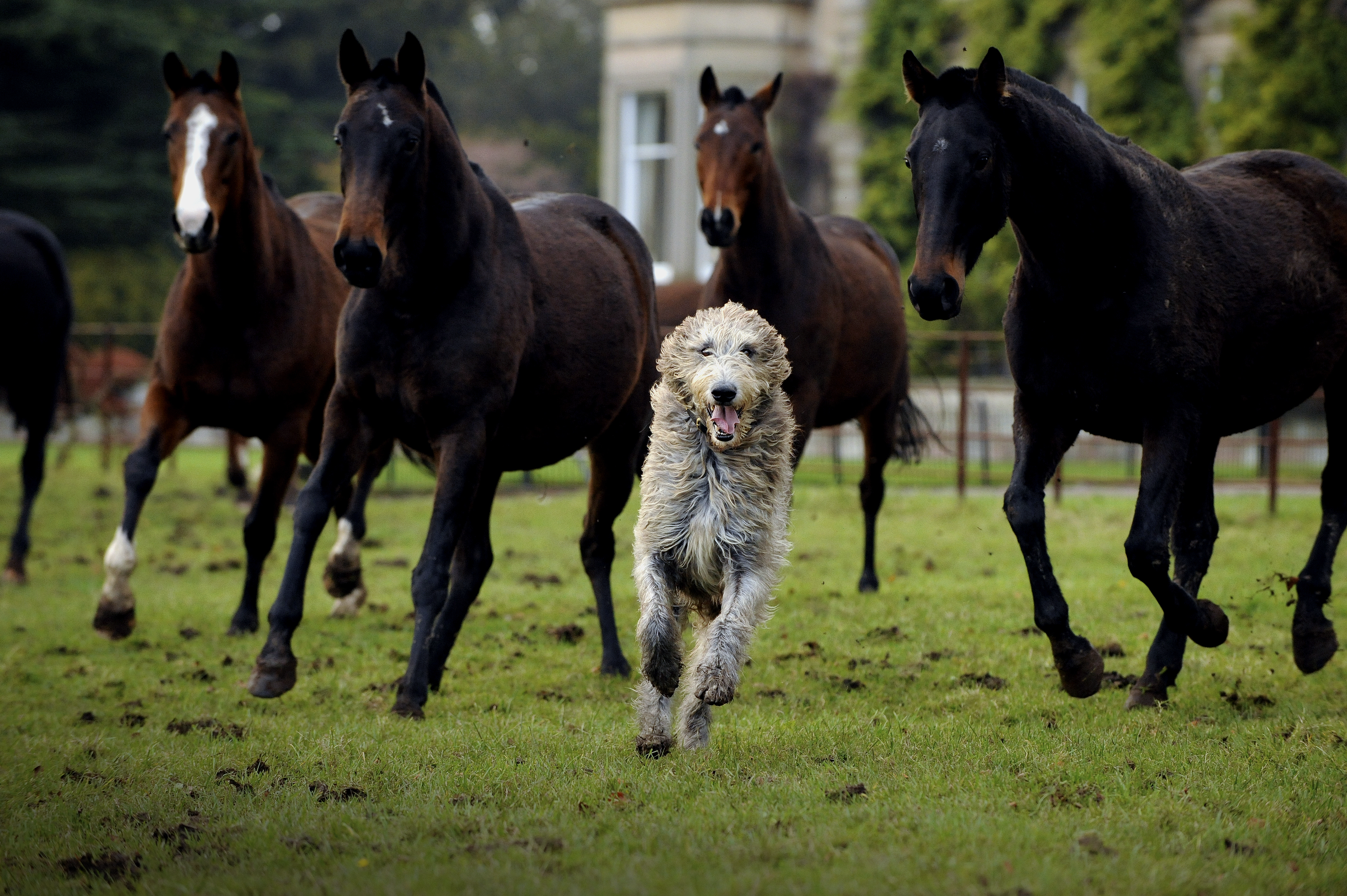
It’s impossible not to be stunned by the sheer size of an Irish wolfhound. They’re the kind of dogs that stop you in your tracks — not just because of their impressive size, but because of the majestic air they carry, a wisdom and grace that is both calming and mighty. I personally identify them as the Gandalf the Grey of dogs. Maybe Ian McKellen in general, to be honest. And so, it’s no surprise that they make a natural canine companion for the Irish Guards.
In the Town and Country section of this week's issue of Country Life (July 30) we featured their beloved mascot, Irish wolfhound Seamus; real name Turlough Mór, after an ancient High King of Ireland — a naming tradition that has been in place since 1902 and that perfectly reflects the breed’s royal past and place in history.
To mark the 125th anniversary of the regiment, Seamus was immortalised in a sculpture by Zoe Carmichael, unveiled by HRH The Princess of Wales, Colonel of the Regiment, on St. Patrick’s Day 2025. The sculpting process took four months and 35 hours of dedicated work, and the finished statue — supporting the Irish Guards Benevolent Fund — is a beautiful tribute to Seamus’s role inside the regiment.
Seamus took up his position in 2020, stepping into the big paws of Domhnall, who retired in 2019. Seamus’s first parade was on St. Patrick’s Day 2021 — his official debut to the public, marking the start of his important ceremonial duties. Seamus’s arrival, however, wasn’t without its challenges. The Covid-19 pandemic made finding the right puppy a bit tricky, but thanks to Drummer Adam Walsh and the Royal Army Veterinary Corps Centre, Seamus was found, trained, and ready to take up his role.
Today, he continues to prepare for future ceremonial duties, under the care of a new handler, Drummer Joseph Aldridge (Joey) from the 1st Battalion, Irish Guards. I had the pleasure of speaking with Joey (and Seamus) on the afternoon of the sculpture unveiling at the Wellington Barracks in London — an event that featured a procession by the Irish Guards Regimental Band, Drums and Pipes — ceremonial uniforms and all.
During our conversation, we discussed Seamus’s responsibilities as the official mascot, how he spends his downtime, his favourite foods, and — of course — the burning question: where does Seamus sleep? Spoiler alert — he has his own room.
You can catch the full interview on the Country Life Instagram account.
Exquisite houses, the beauty of Nature, and how to get the most from your life, straight to your inbox.
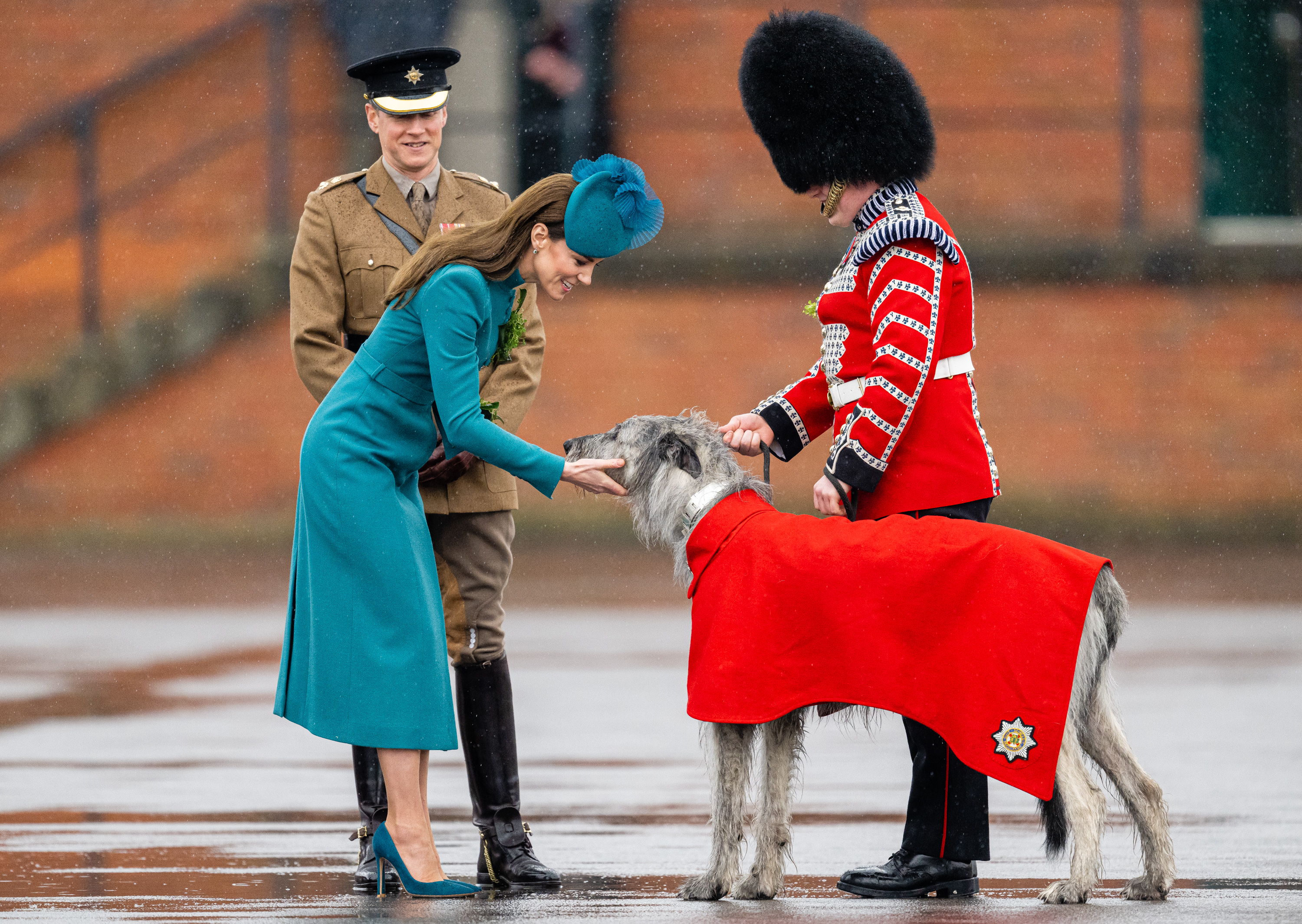
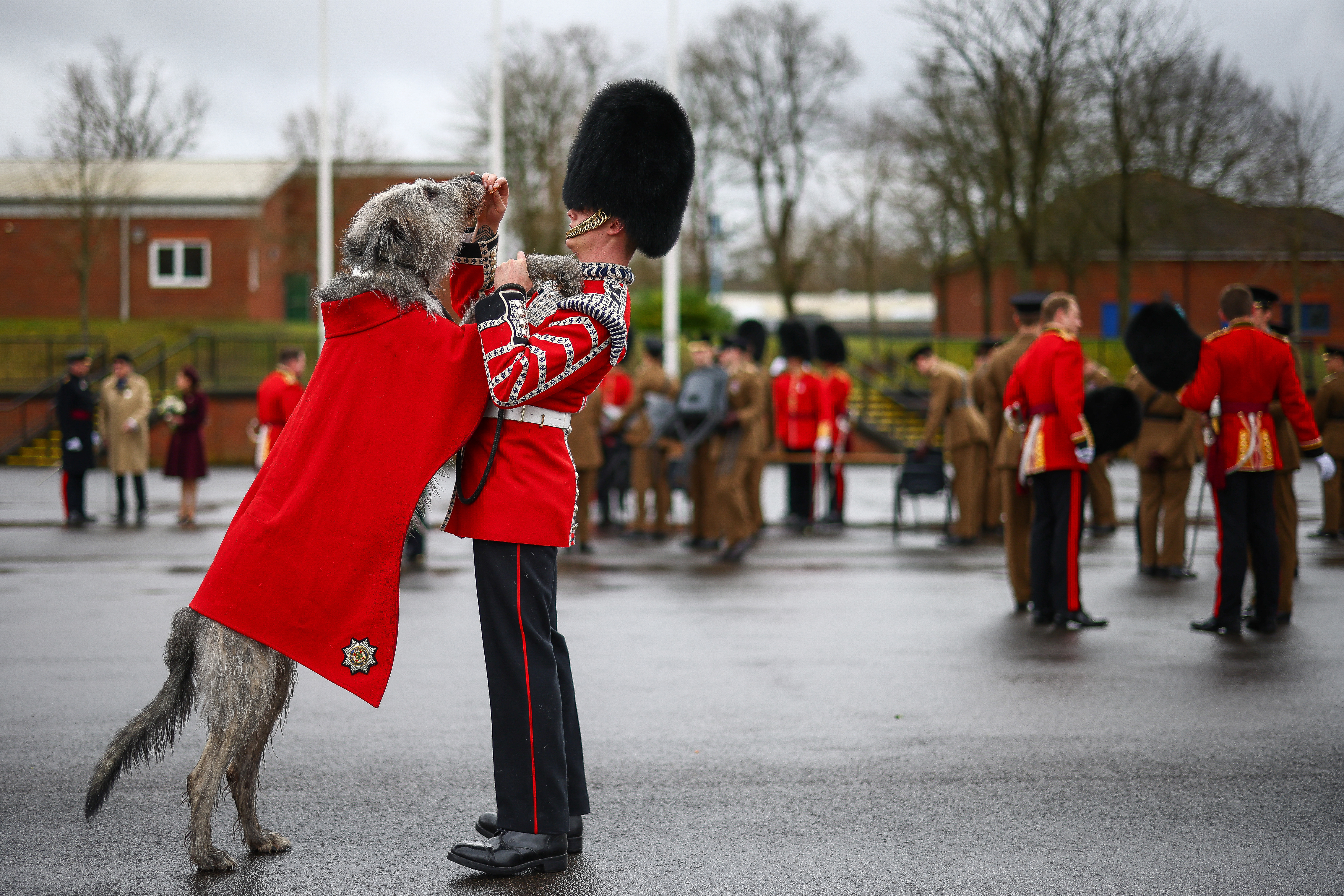
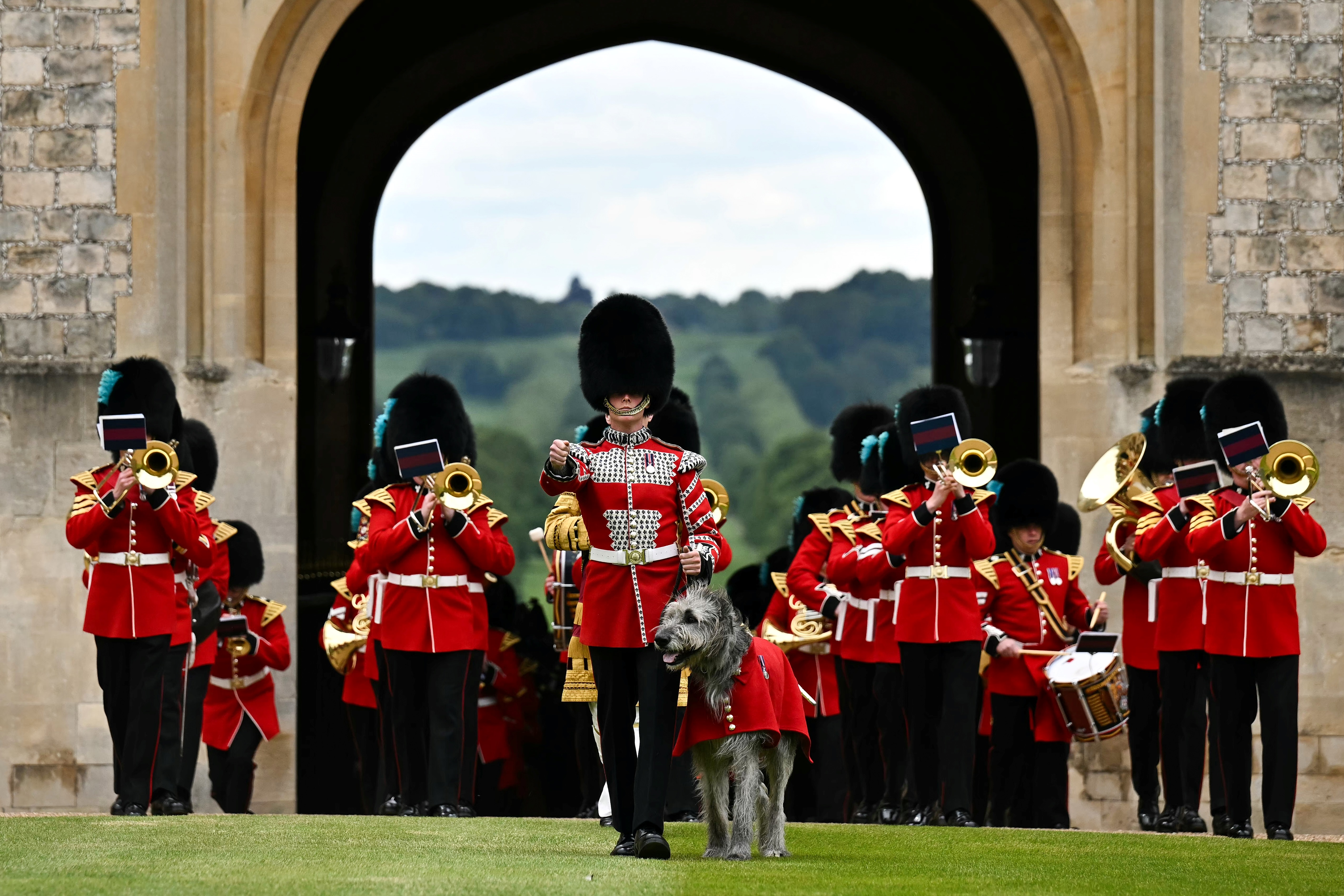
The Irish wolfhound’s history stretches far beyond the military. They are known in ancient Irish law as the cú, which directly translates to ‘hound’ or ‘dog’ in Old Irish. In ancient Irish literature, cú was used figuratively to refer to a warrior, and the wolfhound was a revered symbol of strength and loyalty, owned by kings and nobility. Its impressive size and endurance made it the perfect hunting companion — guarding herds, and even going into battle alongside its master. I personally wouldn’t want to face their wrath!
While the breed nearly vanished after the last wolf was killed in Ireland in the 18th century, it was revived in the Victorian era by breeders like Maj H. D. Richardson and Capt George Graham — and for that, they have my eternal thanks. The first modern Irish Wolfhounds were registered in 1886, and since then, the breed has captured the hearts of many.
Irish Wolfhounds became particularly beloved by the aristocracy; Elizabeth, Empress of Austria, was a fan, as were Presidents John F. Kennedy and Herbert Hoover, who both kept Irish Wolfhounds in the White House. Their presence is also seen in the emblem of the Irish National Bank, and they make a memorable appearance in the St. Patrick’s Day parade in New York.
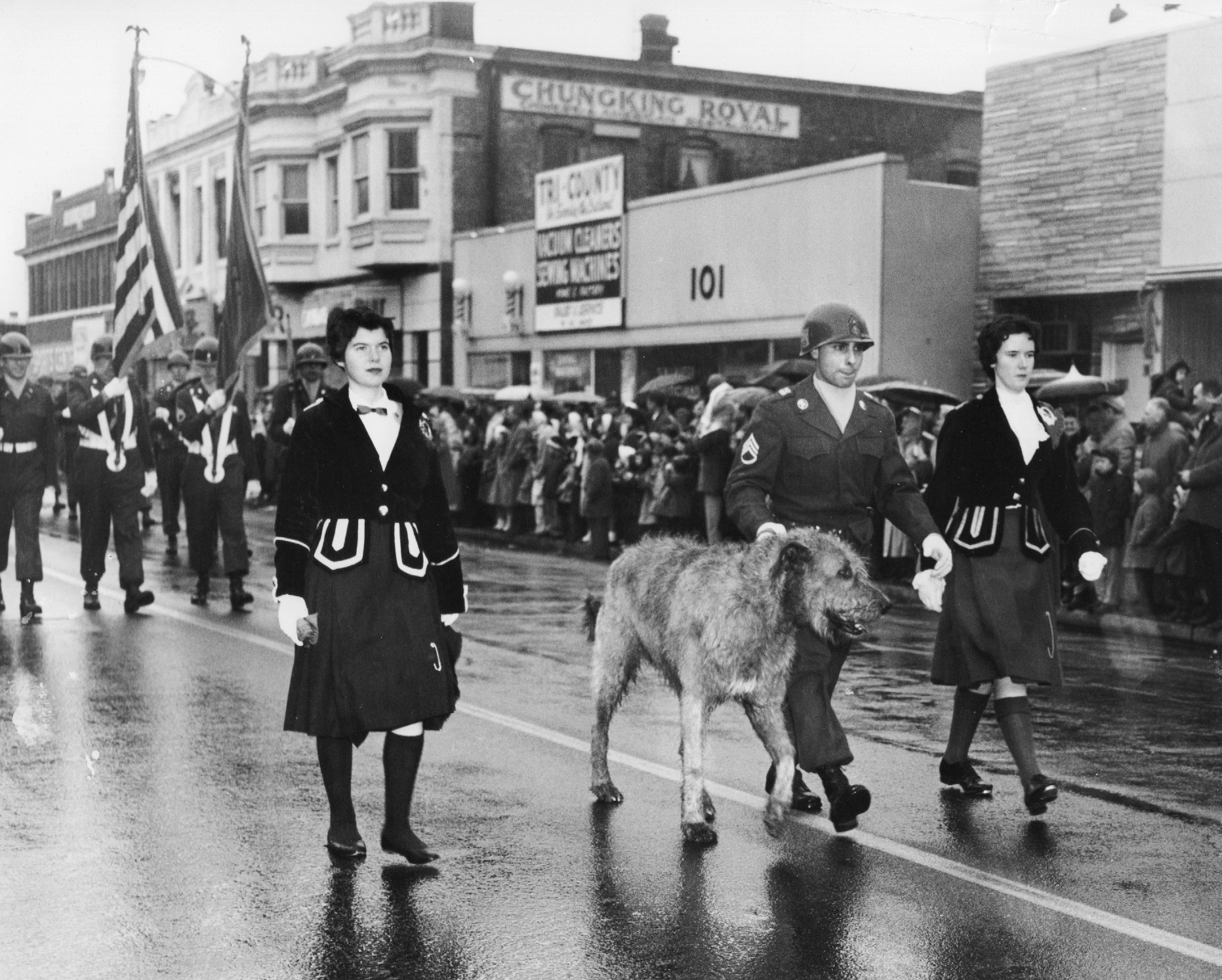
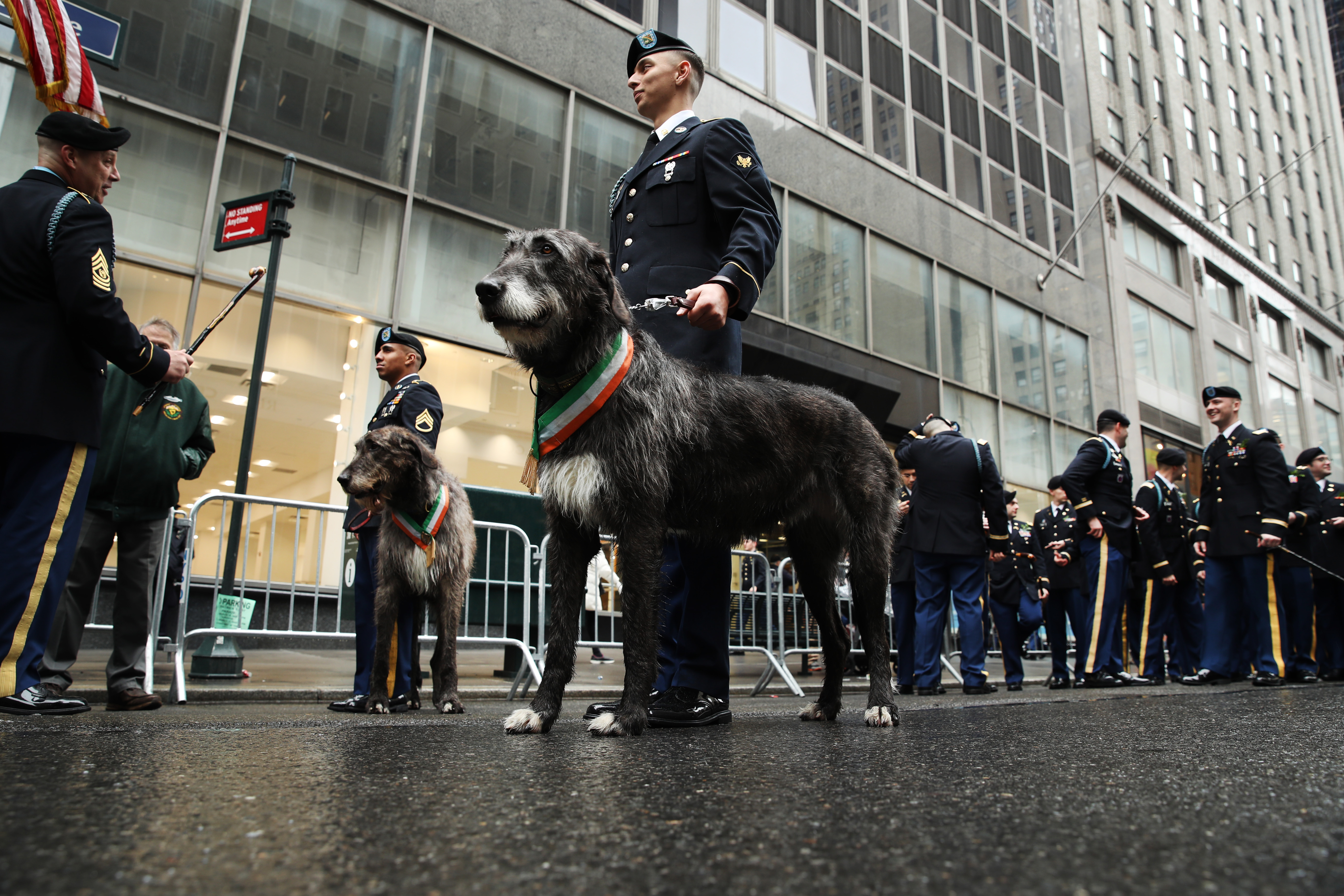

As Flora Watkins has previously written in Country Life: 'The breed’s legendary size (standing up to 80cm tall) and temperament make them both awe-inspiring and affectionate.' And it’s true — these dogs are as gentle as they are giant. Their loyalty and affection make them ideal family companions, and they are a fixture in many homes, including John F. Kennedy's White House (Wolf, sometimes referred to as Wolfie by the family, was given to the Kennedys by a Dublin priest; he liked children and other animals, but not dogs) and Trudie Styler's.
While they no longer hunt wolves, the Irish wolfhound's size still requires a certain lifestyle. These dogs need space — lots of it. They need gardens, room to run, and a home that can accommodate their gentle yet playful nature. You’ll need room for at least two sofas, as this dog will require one to itself. Unless you’re up for challenging the usual understanding of a lap dog — good luck with that!
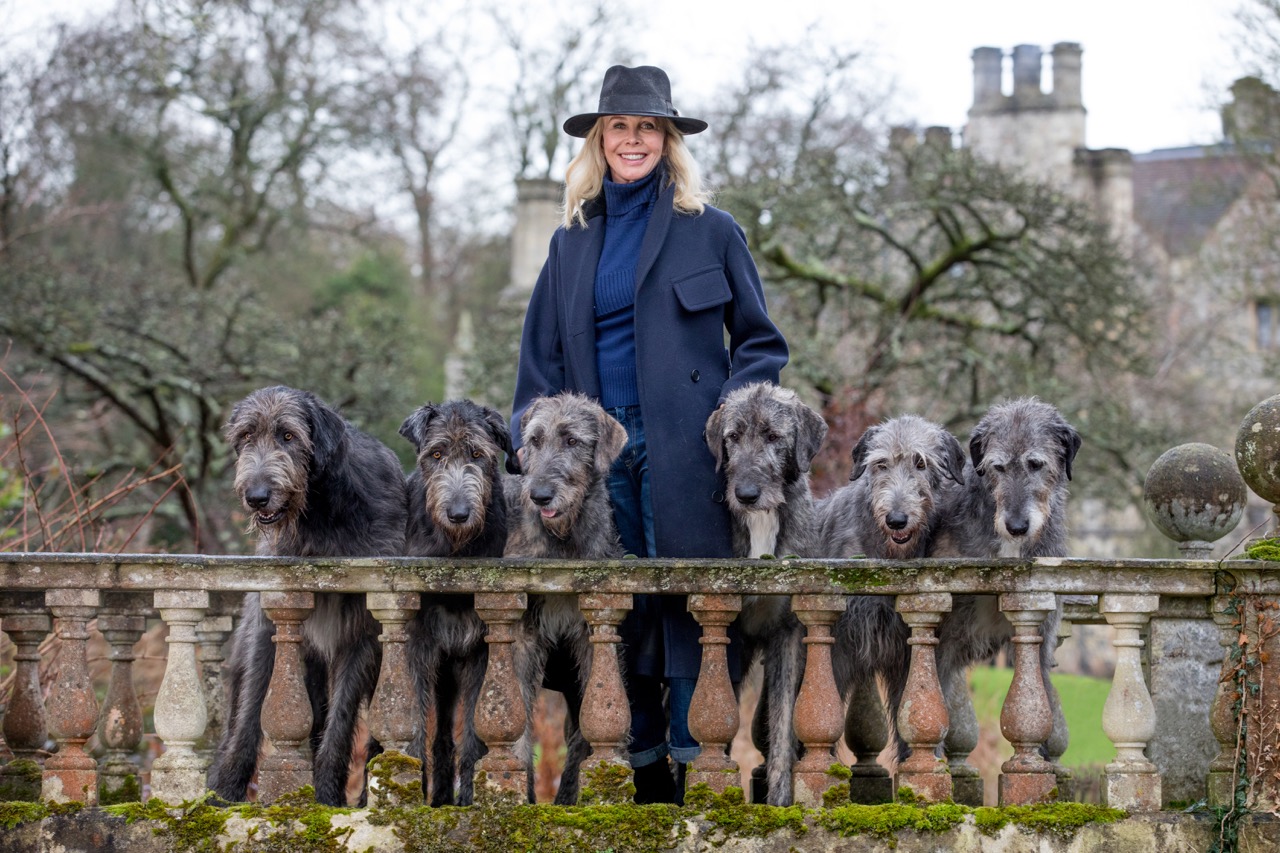
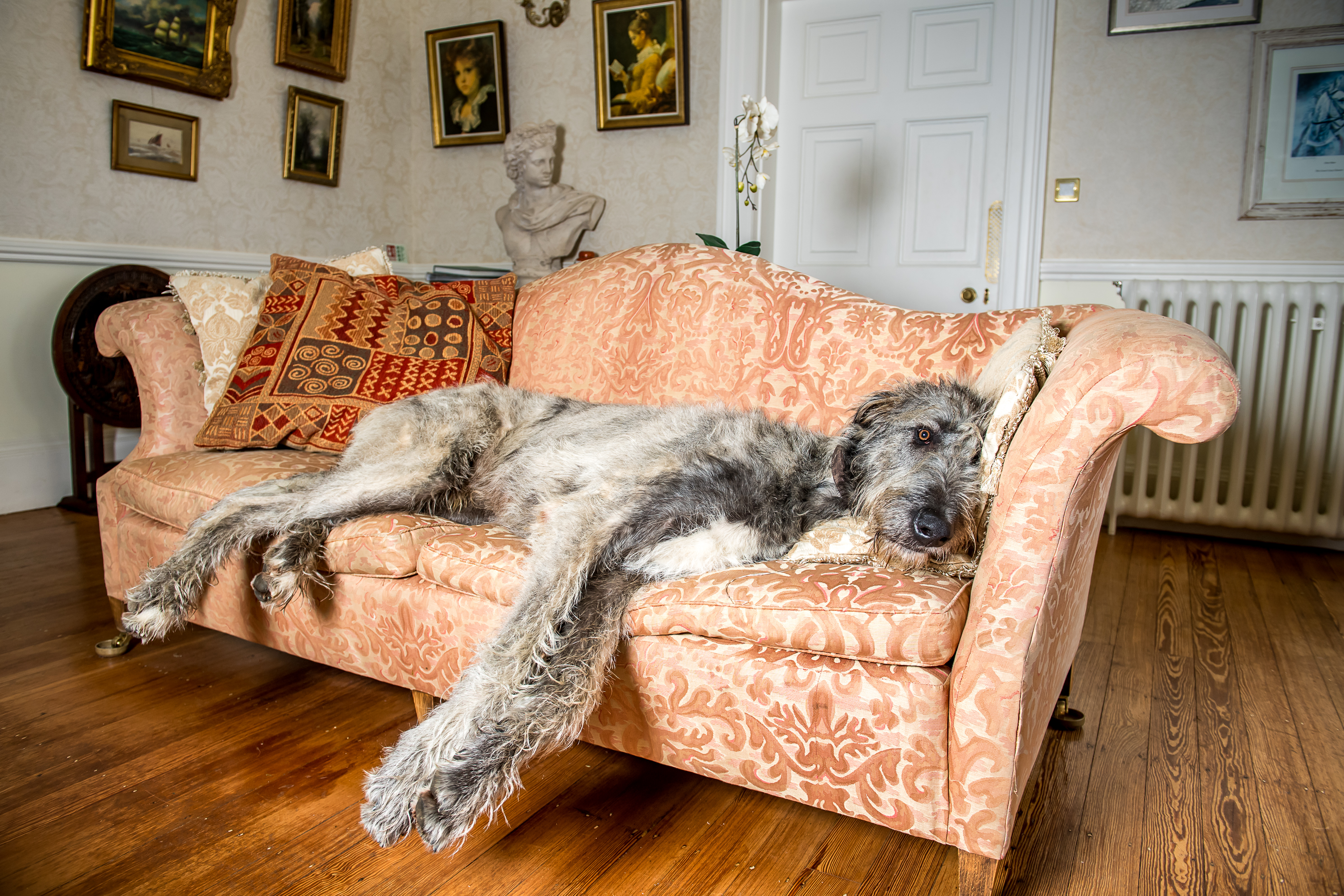
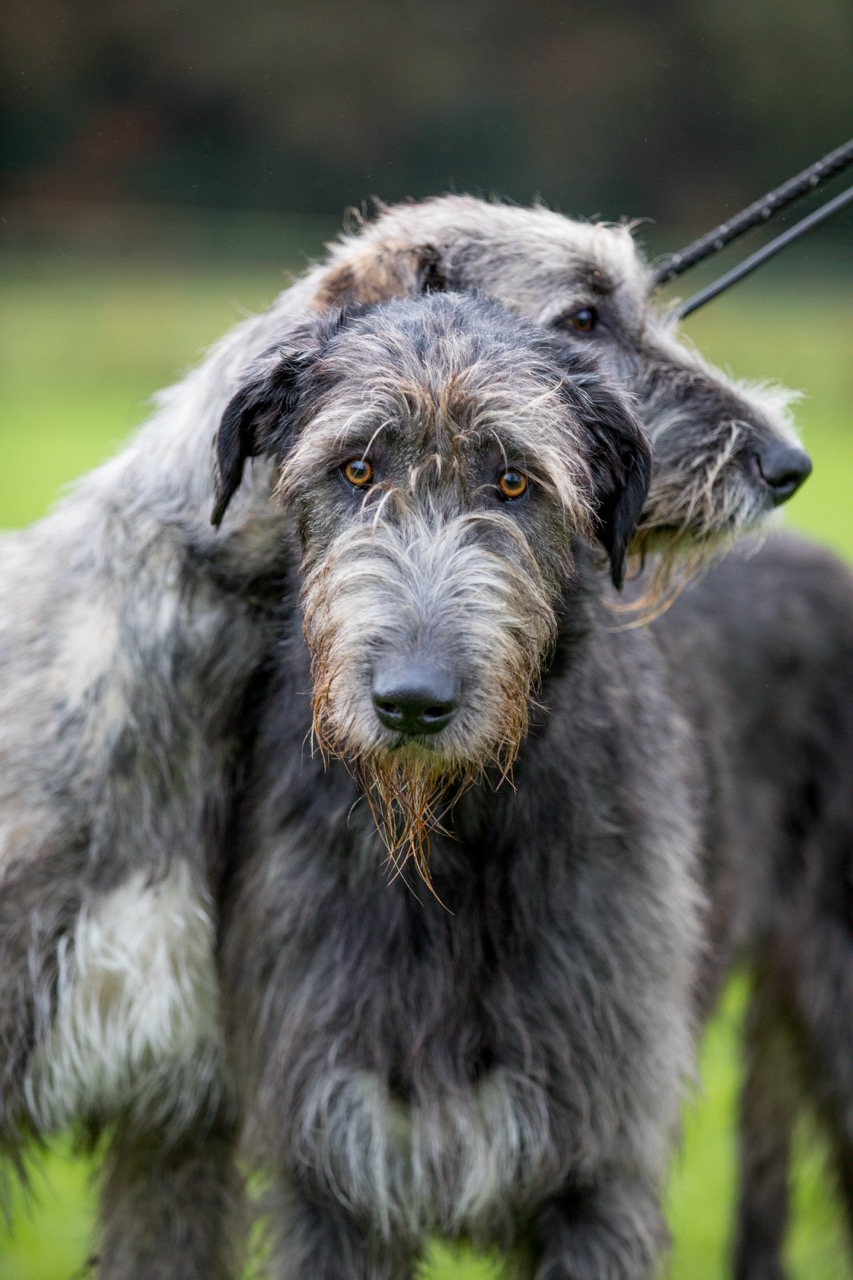
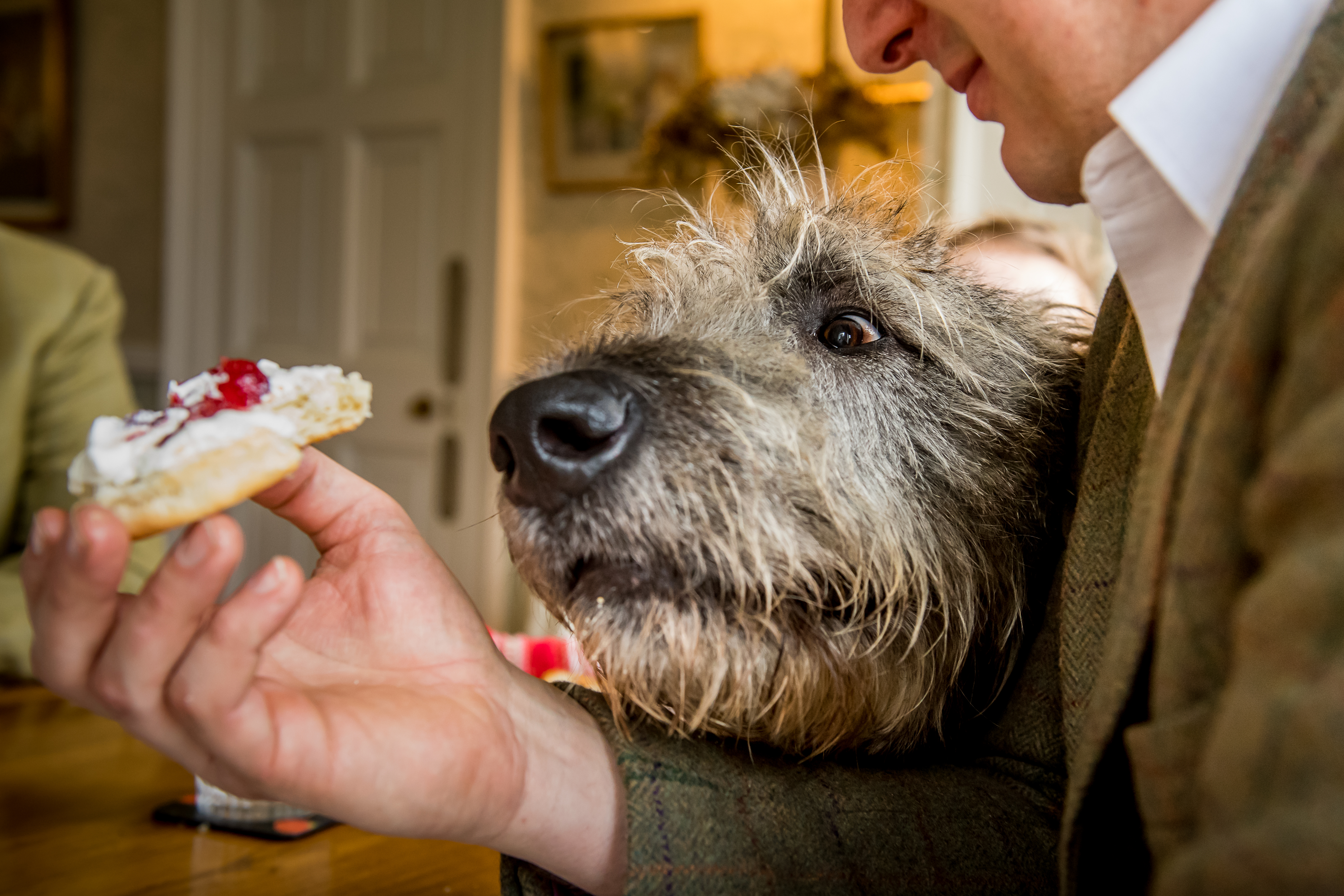
But be warned: owning an Irish Wolfhound isn’t for the faint of heart. They have a relatively short lifespan — typically 6 to 10 years — due to heart conditions like Dilated Cardiomyopathy, which is common in the breed. Breeders such as Trudie have worked tirelessly to improve the breed's health, with heart testing and bone-cancer research helping to ensure the future of these magnificent creatures.
Despite their health challenges, Irish Wolfhounds remain symbols of loyalty, strength, and grace. Whether they’re performing ceremonial duties with the Irish Guards or curled up on the sofa, they continue to be a cherished part of Irish heritage.
A feature on Irish Wolfhounds by by Flora Watkins originally appeared in the January 31, 2018 issue of Country Life. Click here for more information on how to subscribe
Florence is Country Life’s Social Media Editor. Before joining the team in 2025, she led campaigns and created content across a number of industries, working with everyone from musicians and makers to commercial property firms. She studied History of Art at the University of Leeds and is a dachshund devotee and die-hard Dolly Parton fan — bring her up at your own risk unless you’ve got 15 minutes to spare.
